Bloomington public bus drivers needed, Route 8 could see “microtransit” pilot
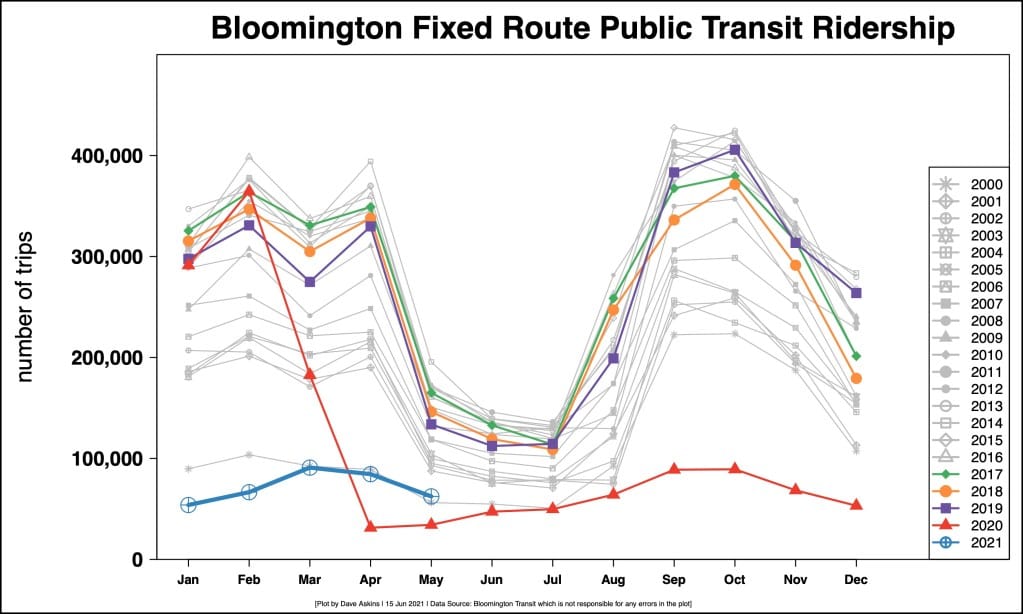
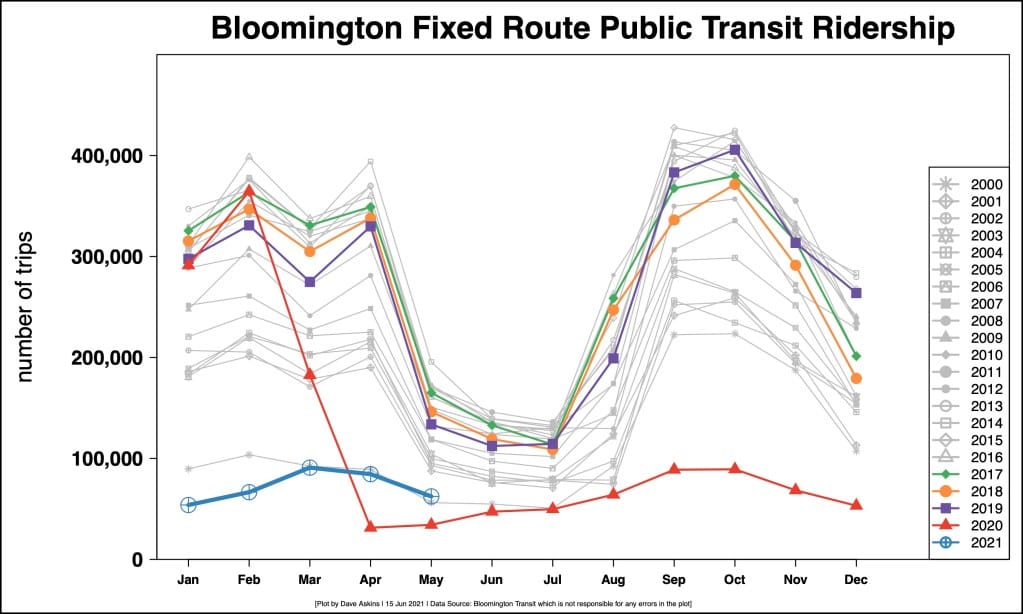
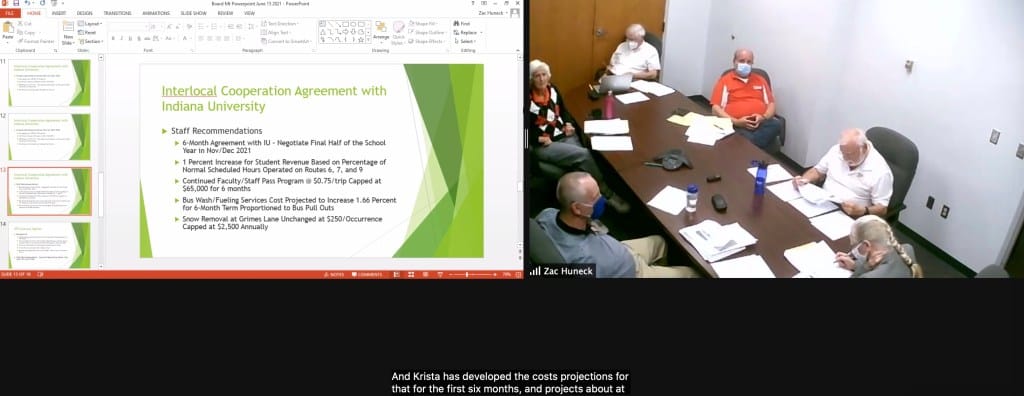
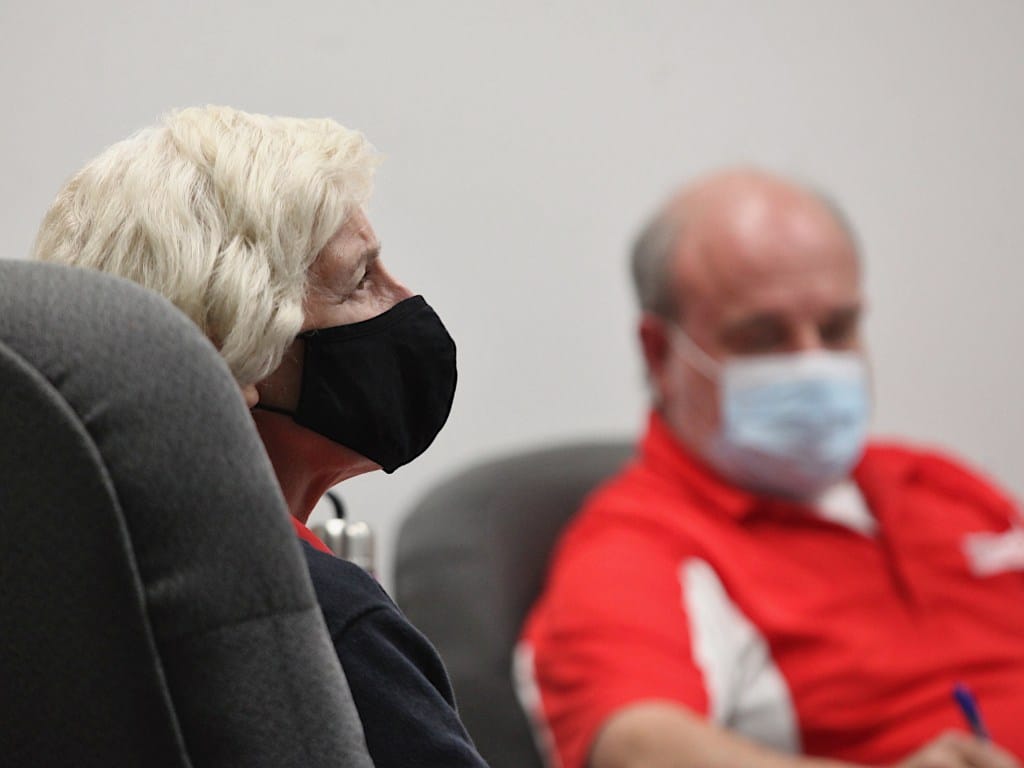
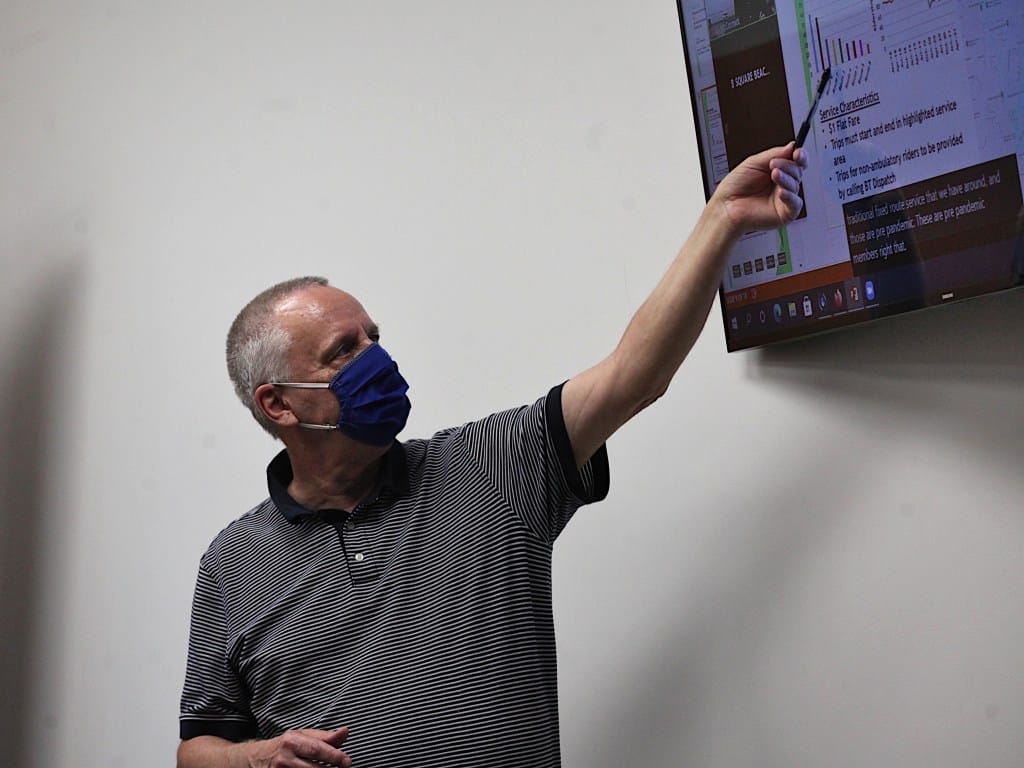
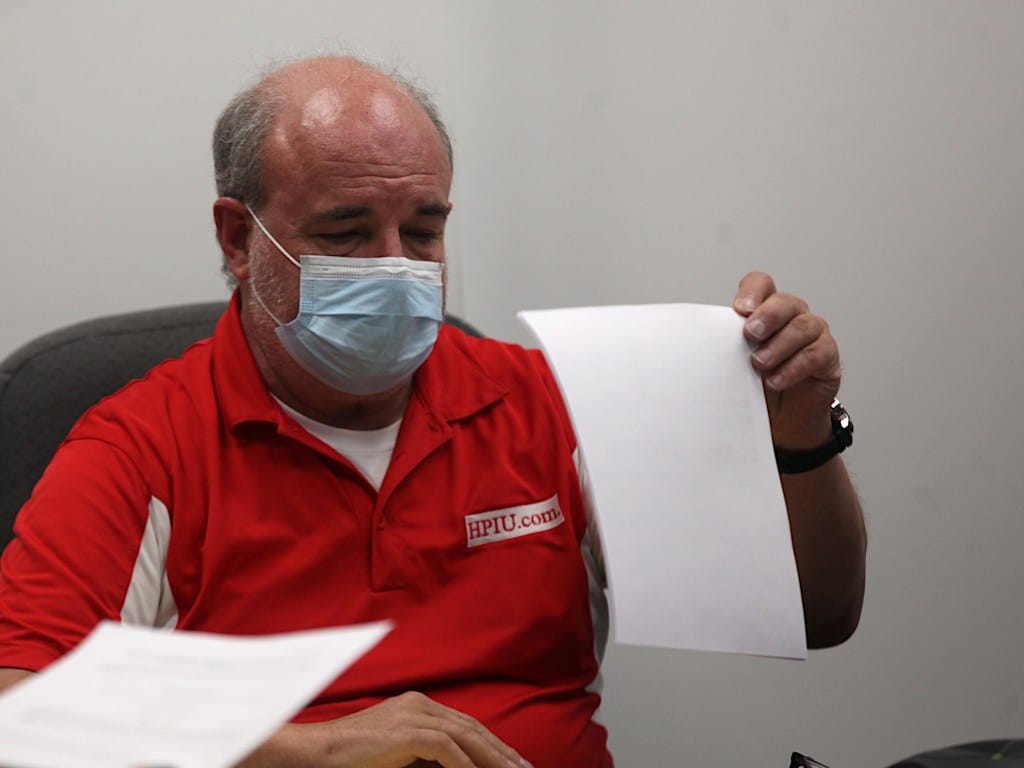
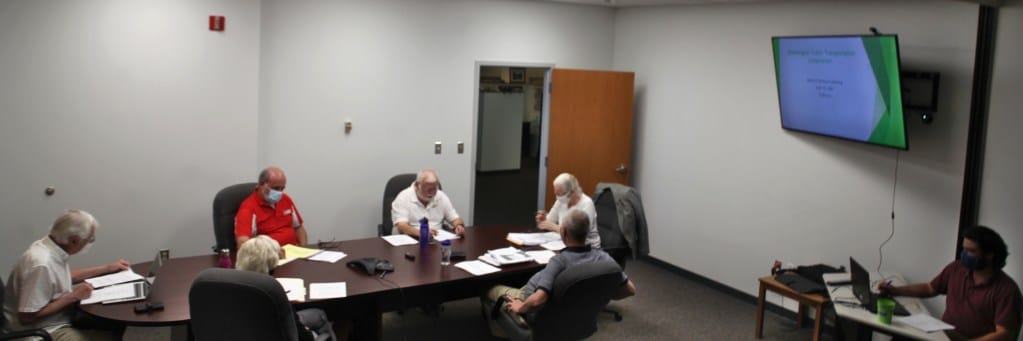
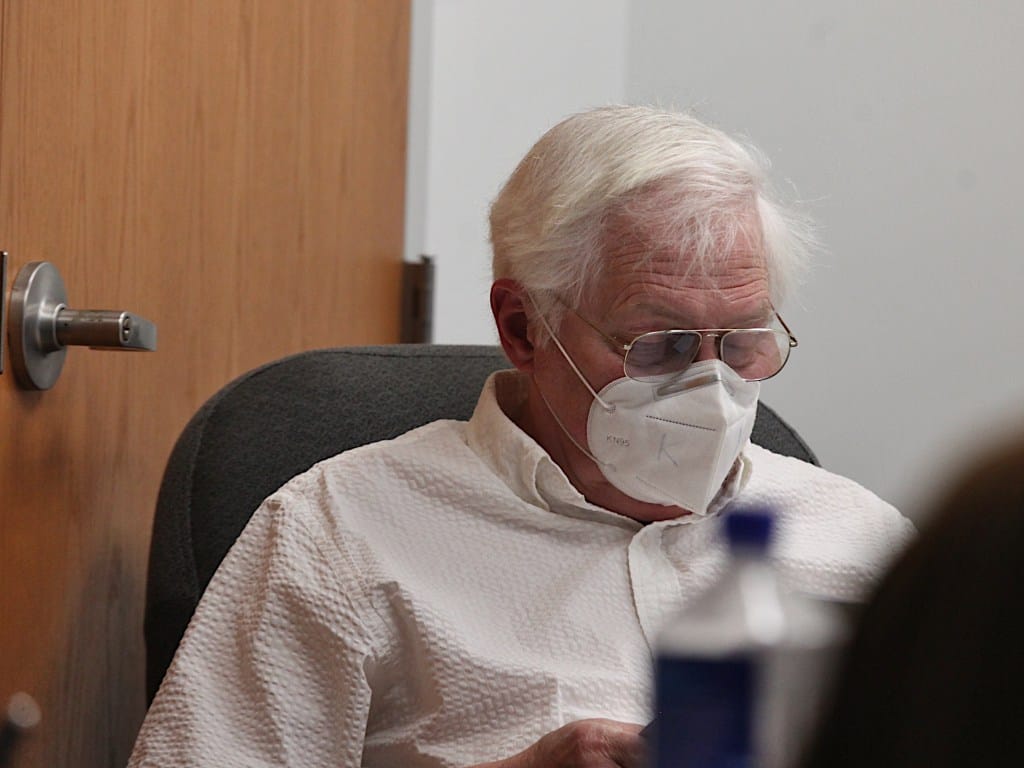
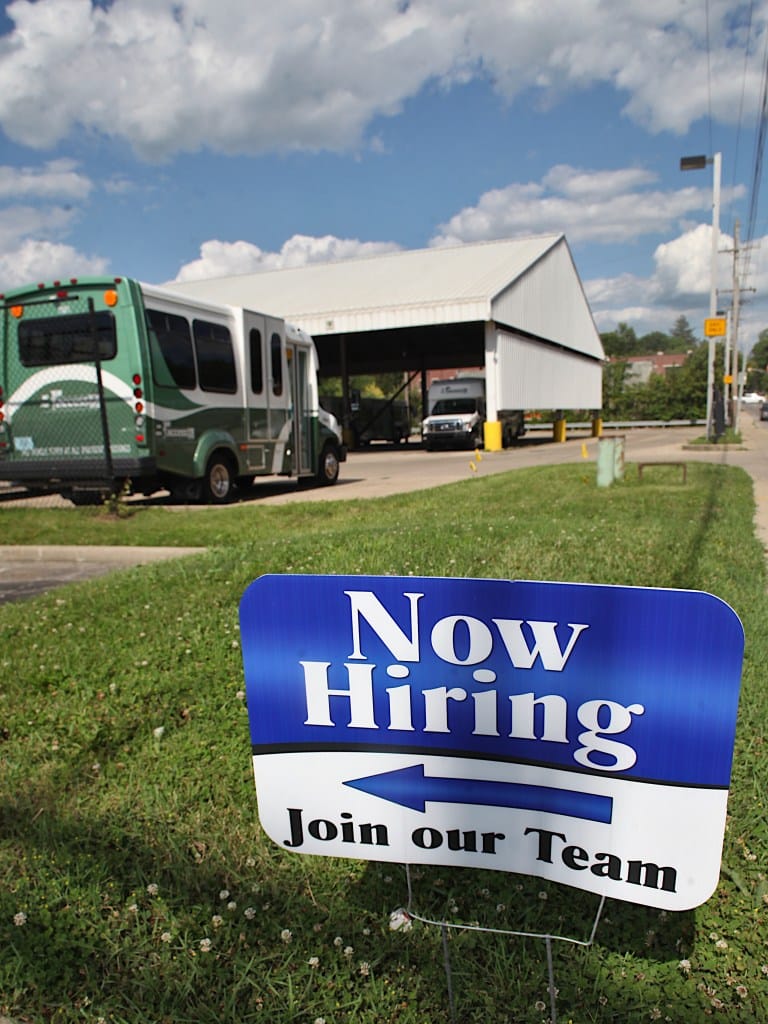
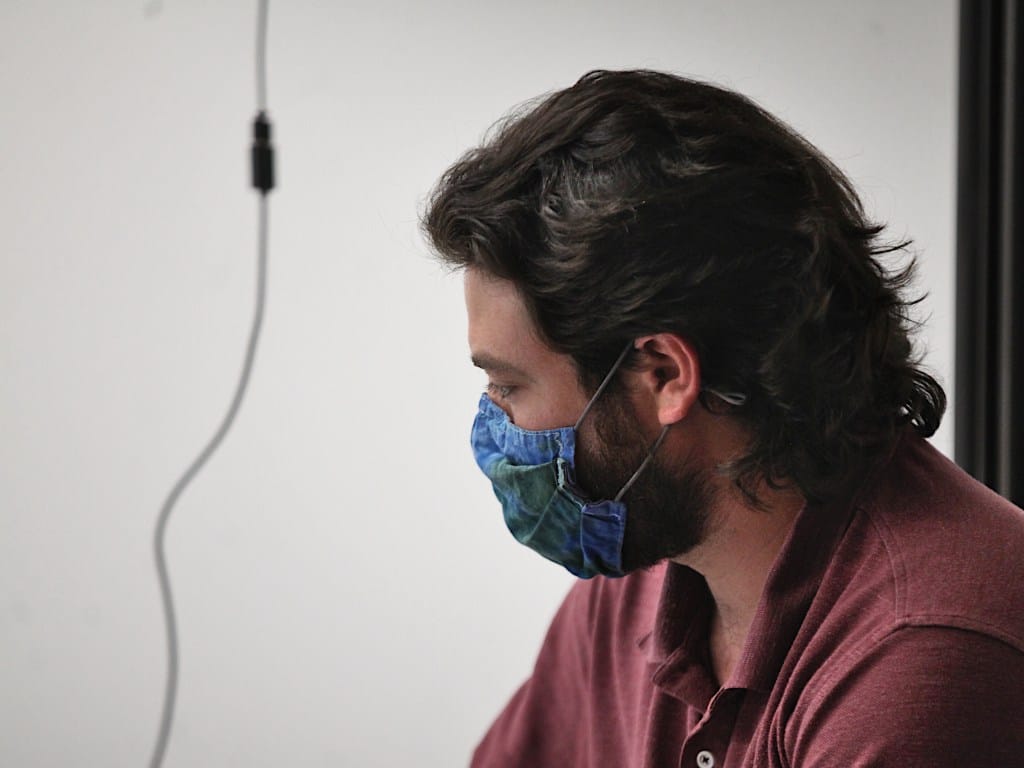
Bloomington Transit (BT) has a critical need for more drivers in the fall, when Indiana University’s normal fall semester starts.
And fixed-route service on Route 8 could see a one-year experimental replacement in September—with a combination of service provided through BT by Uber and Lyft.
Those were two takeaways from the Bloomington Transit board’s Tuesday night meeting.
The topics mean some significant work for the board and staff in the coming months, in addition to items already on their plates.
The board will need to make a decision on replacing 20-year veteran general manager Lew May, whose retirement is anticipated for August of this year. And the current collective bargaining agreement with the bus drivers union goes just through the end of the year, so it needs to be re-negotiated.
The BT board’s in-person Tuesday meeting was held in a way that offered access via the Zoom video conferencing platform.
All five board members attended in person. From a tech perspective, the hybrid setup appeared to work glitch-free.
Bloomington Transit is still looking to hire about 10 more drivers, to meet the service demands that will come when a post-pandemic normal fall schedule resumes, and Indiana University students start attending classes in person.
Even as the pandemic wanes, things are quiet right now for public transportation in Bloomington.
For the month of May, BT fixed route ridership was a bit less than half what it has been historically for that month. This year’s 62,408 rides add up to 47 percent of the 133,798 total in 2019.
The summer schedule means BT does not need as many drivers right now as it will in the fall when service frequencies increase. In non-pandemic times, IU affiliates—students, faculty and staff—account for about 70 percent of fixed-route rides.
On Tuesday, the board approved a new interlocal agreement between IU and BT so that IU affiliates can board without paying a fare. BT will start collecting fares again on July 1, after waiving them for over a year during the pandemic.
Job fairs for recruitment of drivers are set for June 23 and June 24 at 11 a.m. at the downtown transit center. Those events follow job fairs earlier this spring and Facebook advertising, in addition to the usual posting of jobs.
At Tuesday’s meeting, human resource administrator Brenda Underwood gave the board an update on the spring hiring efforts.
Underwood told the board that the job fairs and advertising had produced about 50 applicants. Six of them were no-shows for interviews. Three had background issues. Several applicants didn’t have a working phone or the voicemail wasn’t set up, Underwood said.
Out of the pool of 50, there were just 16 potential candidates, she said. So far, six positions have been offered. Out of those six, two did not go to take their drug test. And two people stopped showing up to training. That leaves two candidates out of 50, who are in training as bus drivers.
General manager Lew May told the board that recruiting drivers is an “existential problem” for Bloomington Transit. “If we’re going to be able to provide service to the community, we’ve got to be able to recruit employees to do it,” May said.
May told the board that the upcoming collective bargaining negotiations are going to be a critical step. May said, “I have no doubt that there’s going to be significant pressure to increase wages and benefits to make our jobs more attractive to more people.”
 Not needing extra BT drivers will be a possible new one-year pilot program to replace service on Route 8 with “microtransit” service. Unlike fixed-route service, which is provided on regular routes with 40-foot long buses, microtransit provides rides through an arrangement with companies like Uber and Lyft.
Not needing extra BT drivers will be a possible new one-year pilot program to replace service on Route 8 with “microtransit” service. Unlike fixed-route service, which is provided on regular routes with 40-foot long buses, microtransit provides rides through an arrangement with companies like Uber and Lyft.
The fare for the microtransit service would be a flat-rate of $1, which is the same as the regular fare for a fixed-route bus ride.
Route 8 is a north-south running route along College Mall and Sare roads, with a loop at the northern end that goes as far east as North Park Ridge Road. It does not provide service to the Indiana University campus.
Route 8 is currently the least productive route in BT’s system.
A public hearing on a one-year microtransit replacement pilot for Route 8 is planned for late July, with a BT board decision to follow. The target start time for microtransit on Route 8 is September.
The trip origin and destination for a Route 8 microtransit ride would have to fall within a defined corridor around the area where Route 8 currently runs.
Uber and Lyft are not able to take passengers who use wheelchairs the way BT fixed-route buses can. To cover that gap, the plan is to use BT’s paratransit service, called BT Access.
On that approach, someone who would normally need to schedule a rile on BT Access a day in advance would be able to get same-day service.
Responding to the idea that the microtransit service would be popular with Indiana University students, May noted that it would not provide service to the campus.
The kind of trip that microtransit would serve in the Route 8 corridor would be home-to-shopping and back, May said. There are several multifamily apartment complexes and major retail outlets in the Route 8 service area.




Comments ()